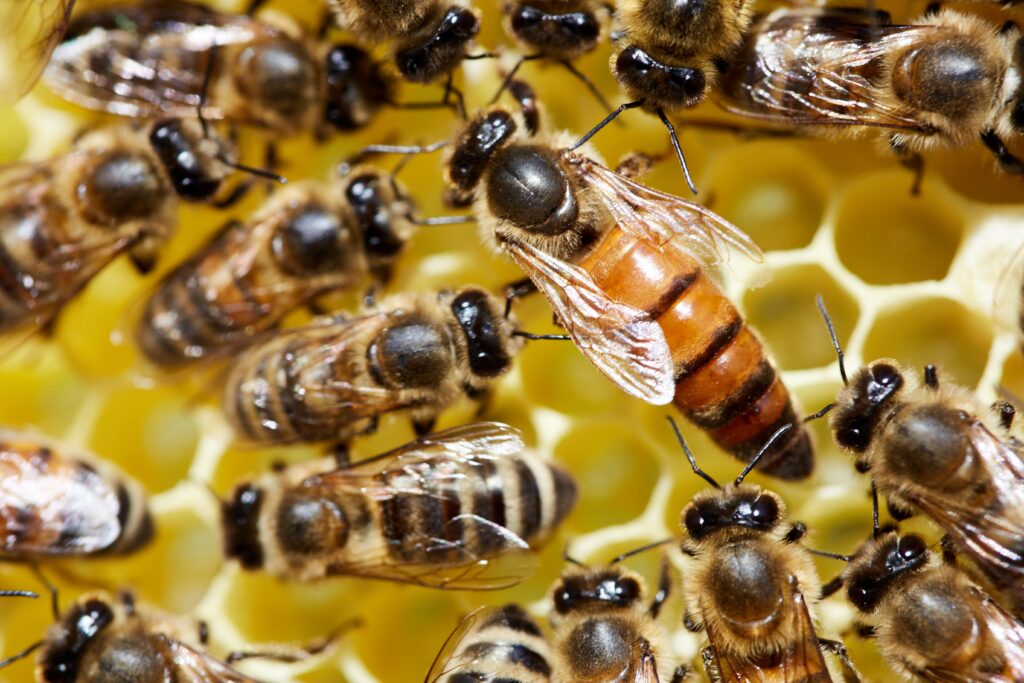In a groundbreaking effort to extend human lifespan and improve fertility, researchers in the UK are studying an unlikely role model: the queen bee. Despite having nearly identical DNA to worker bees, queen bees live for years, while worker bees only live for a few months. The queen also remains fertile throughout her life and enjoys much better health compared to her worker counterparts. Scientists believe that understanding the secrets behind the queen bee’s extraordinary traits could lead to revolutionary breakthroughs in human aging and disease resistance.
Research Backed by £800 Million: High-Risk, High-Reward Ventures
This ambitious research is being funded by the Advanced Research + Invention Agency (Aria), a government-funded body with a budget of £800 million. Aria is designed to support high-risk, high-reward scientific ventures, and it is modeled on the U.S. agency DARPA. Launched by Dominic Cummings, Aria has already backed cutting-edge projects in AI safety, robotics, synthetic biology, and brain-computer interfaces. Now, one of its new program directors, Yannick Wurm, is leading a project focused on the longevity, fertility, and immune defense mechanisms found in bees, ants, wasps, and termites.
“These creatures may seem odd, but they have solved some of the biggest biological problems that we still struggle with,” Wurm said. “Their solutions to longevity, fertility, and immune defense could revolutionize human health and medicine.”
Unlocking the Queen Bee’s Longevity Formula
Queen bees have a lifespan that far exceeds that of worker bees. While workers typically live only a few months, queens can survive for years. Researchers believe that the queen bee’s long life is due to several key factors. First, queens are fed royal jelly, a nutrient-rich substance produced by worker bees. This royal jelly is packed with vitamins, minerals, and other substances that help the queen maintain her health and fertility.
In addition to royal jelly, the queen bee’s gut microbiome also plays a critical role in her long life. Studies have shown that the queen’s unique mix of gut microbes contributes to her health and longevity. Researchers have recently conducted experiments where they transferred gut microbes from queen bees to worker bees. Remarkably, this significantly extended the workers’ lifespans, offering strong evidence that the queen’s microbiome has a unique ability to promote longevity.
Another factor that contributes to the queen bee’s long life is the way she stores sperm. Queen bees mate once in mid-flight and then store the sperm in a special organ called the spermatheca. This allows her to fertilize eggs throughout her life, ensuring a continuous supply of offspring.
By studying the queen bee’s biology, scientists hope to unlock secrets that could delay human aging, improve organ preservation, and even enhance immune responses. Wurm believes that understanding the biological differences between queen bees and workers could lead to the development of new therapies that could transform the way humans age and fight diseases.
Beyond Bees: Bio-Inspired Innovations
While the queen bee’s longevity is at the forefront of Aria’s research, the agency is also exploring other bio-inspired innovations. One of the agency’s other directors, Ivan Jayapurna, who previously worked at UC Berkeley, is leading a project aimed at replacing plastics with sustainable, programmable materials inspired by nature.
“We’re in the plastics age—it’s time to move on,” Jayapurna said. His goal is to create materials that are self-healing, adaptive, and eco-friendly, with properties that mimic natural ecosystems. These new materials could replace traditional plastics in everything from packaging to electronics, reducing the environmental impact of plastic waste.
The idea of bio-inspired materials is gaining traction as scientists look for more sustainable alternatives to the resource-intensive products of the past. By learning from the natural world, researchers hope to create materials that are not only better for the environment but also more functional and durable.
A Long Road Ahead: Embracing Failure as Part of Innovation
One of the core values of Aria is embracing failure as part of the process. While each program is set to run for three to five years, the agency recognizes that breakthrough innovations often come with a high degree of risk. “We’re sending up a flare,” said Pippy James, Aria’s chief product officer. “We may not reach the future right away, but even failed experiments can pave the way for the next big discovery.”
This mindset is particularly important when working with high-risk projects like the one focusing on queen bees. While the potential rewards are enormous, the path to success is far from guaranteed. However, by taking bold steps in uncharted territory, Aria hopes to open doors to new therapies and solutions that could dramatically improve human health and longevity.
The Future of Longevity and Health
As the research continues, the potential applications of the queen bee project could go far beyond simply increasing lifespan. Scientists are hopeful that they can use the insights gained from studying these remarkable creatures to improve the quality of human life. From extending healthy lifespan to developing better treatments for age-related diseases, the possibilities are exciting.
By looking to nature for solutions to some of humanity’s most pressing health challenges, Aria is charting a course that could lead to a new era of scientific discovery. Whether it’s unlocking the secret to the queen bee’s longevity or developing sustainable materials, the agency’s high-risk, high-reward approach could pave the way for groundbreaking innovations.


